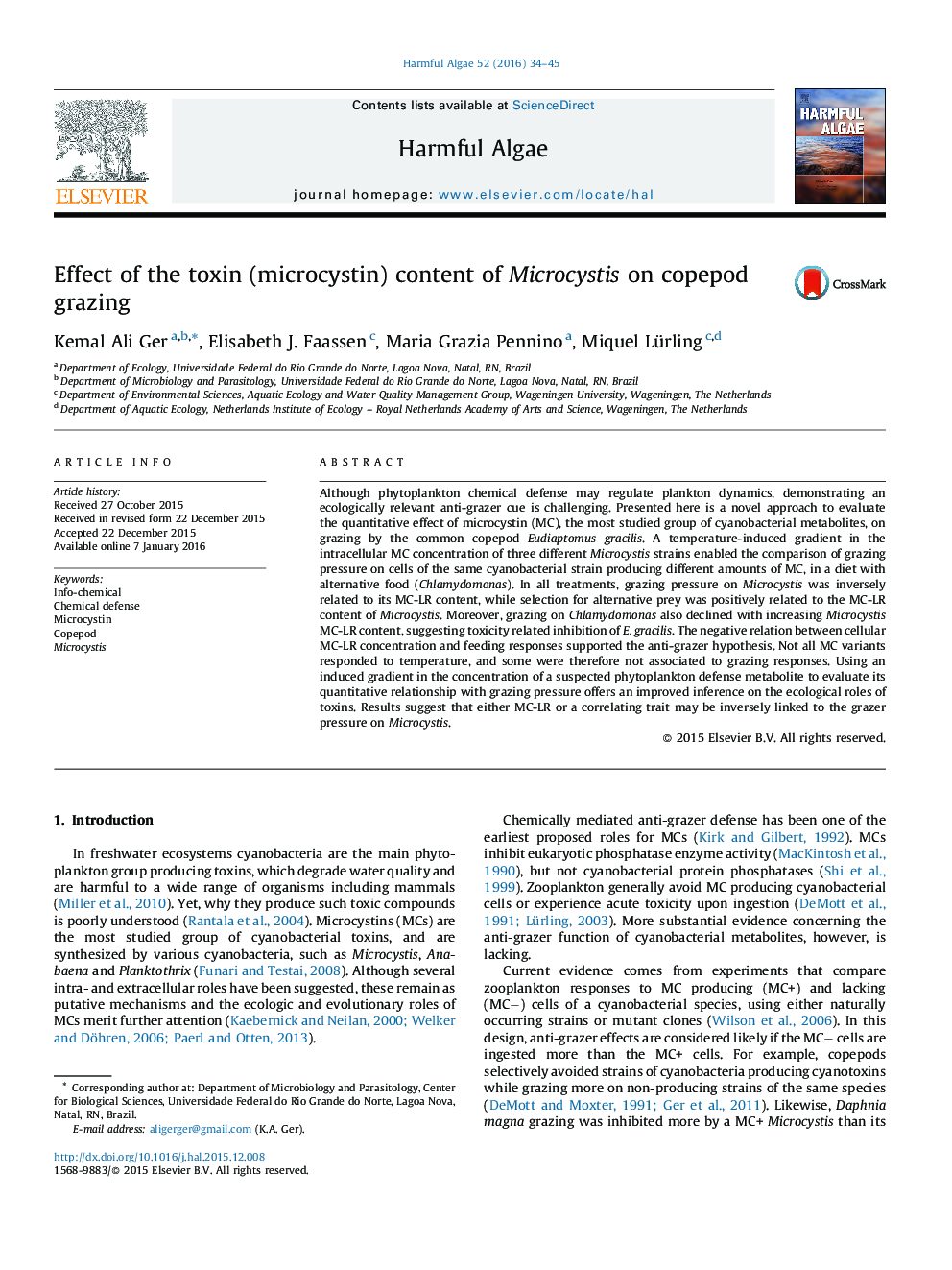| کد مقاله | کد نشریه | سال انتشار | مقاله انگلیسی | نسخه تمام متن |
|---|---|---|---|---|
| 4545197 | 1626919 | 2016 | 12 صفحه PDF | دانلود رایگان |
Although phytoplankton chemical defense may regulate plankton dynamics, demonstrating an ecologically relevant anti-grazer cue is challenging. Presented here is a novel approach to evaluate the quantitative effect of microcystin (MC), the most studied group of cyanobacterial metabolites, on grazing by the common copepod Eudiaptomus gracilis. A temperature-induced gradient in the intracellular MC concentration of three different Microcystis strains enabled the comparison of grazing pressure on cells of the same cyanobacterial strain producing different amounts of MC, in a diet with alternative food (Chlamydomonas). In all treatments, grazing pressure on Microcystis was inversely related to its MC-LR content, while selection for alternative prey was positively related to the MC-LR content of Microcystis. Moreover, grazing on Chlamydomonas also declined with increasing Microcystis MC-LR content, suggesting toxicity related inhibition of E. gracilis. The negative relation between cellular MC-LR concentration and feeding responses supported the anti-grazer hypothesis. Not all MC variants responded to temperature, and some were therefore not associated to grazing responses. Using an induced gradient in the concentration of a suspected phytoplankton defense metabolite to evaluate its quantitative relationship with grazing pressure offers an improved inference on the ecological roles of toxins. Results suggest that either MC-LR or a correlating trait may be inversely linked to the grazer pressure on Microcystis.
Journal: Harmful Algae - Volume 52, February 2016, Pages 34–45
